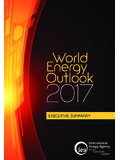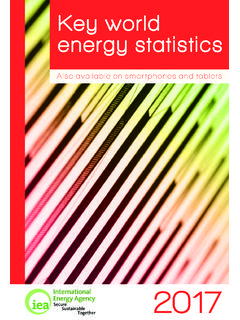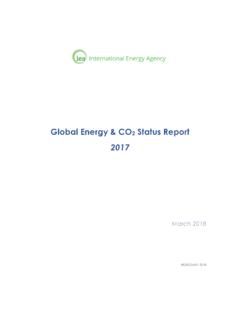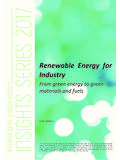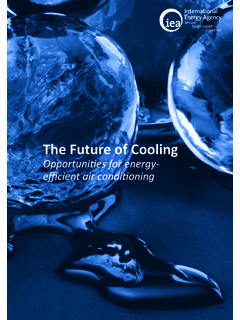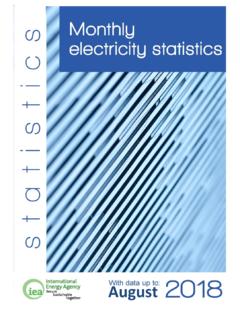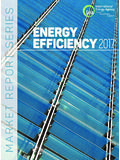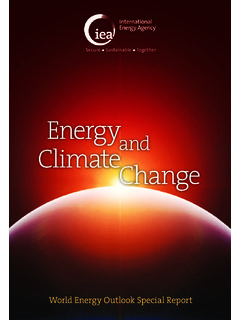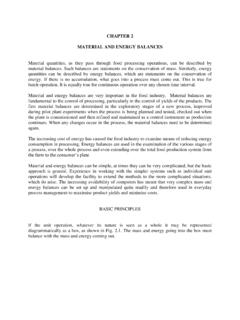Transcription of Energy efficiency indicators - International Energy …
1 Energy efficiency indicatorsstatisticsHIGHLIGHTS20172017 Energy efficiency indicatorsHIGHLIGHTSINTERNATIONAL Energy AGENCYThe International Energy Agency (IEA), an autonomous agency, was established in November 1974. Its primary mandate was and is two-fold: to promote Energy security amongst its member countries through collective response to physical disruptions in oil supply, and provide authoritative research and analysis on ways to ensure reliable, affordable and clean Energy for its 29 member countries and beyond. The IEA carries out a comprehensive programme of Energy co-operation among its member countries, each of which is obliged to hold oil stocks equivalent to 90 days of its net imports.
2 The Agency s aims include the following objectives: n Secure member countries access to reliable and ample supplies of all forms of Energy ; in particular, through maintaining effective emergency response capabilities in case of oil supply disruptions. n Promote sustainable Energy policies that spur economic growth and environmental protection in a global context particularly in terms of reducing greenhouse-gas emissions that contribute to climate change. n Improve transparency of International markets through collection and analysis of Energy data. n Support global collaboration on Energy technology to secure future Energy supplies and mitigate their environmental impact, including through improved Energy efficiency and development and deployment of low-carbon Find solutions to global Energy challenges through engagement and dialogue with non-member countries, industry, International organisations and other member countries.
3 Australia Austria Belgium CanadaCzech RepublicDenmarkEstoniaFinlandFranceGerma nyGreeceHungaryIreland ItalyJapanKoreaLuxembourgNetherlandsNew Zealand NorwayPolandPortugalSlovak RepublicSpainSwedenSwitzerlandTurkeyUnit ed KingdomUnited StatesThe European Commission also participates in the work of the note that this publication is subject to specific restrictions that limit its use and distribution. The terms and conditions are available online at OECD/IEA, 2017 International Energy Agency Website: efficiency indicators Highlights (2017 edition) - 3 International Energy AGENCY TABLE OF CONTENTS Energy USE AND efficiency : KEY TRENDS IN IEA COUNTRIES.
4 5 PART I: EXPLANATORY NOTES .. 11 1. Abbreviations and acronyms .. 13 2. Methodological notes .. 15 The IEA Energy efficiency indicators data collection .. 15 Notes on data quality .. 15 Definitions of products .. 16 Definitions of end-uses/ sub-sectors .. 17 Definitions of activity data .. 19 Comparability with the IEA Energy balances .. 20 Estimates of CO2 emissions by end-use .. 20 Temperature correction .. 21 Decomposition into drivers of final Energy consumption .. 22 Notes on graphs .. 24 3. Units and conversions .. 27 PART II: COUNTRY GRAPHS AND TABLES .. 29 Australia .. 30 Austria .. 34 Belgium .. 38 Canada.
5 42 Czech Republic .. 46 Denmark .. 50 Finland .. 54 France .. 58 Germany .. 62 Greece .. 66 Hungary .. 70 Ireland .. 74 Italy .. 78 Japan .. 82 Korea .. 86 Luxembourg .. 90 Netherlands .. 94 New Zealand .. 98 Poland .. 102 Portugal .. 106 Slovak 110 Spain .. 114 Sweden .. 118 Switzerland .. 122 United Kingdom .. 126 United States .. 130 Country notes .. 135 4 - Energy efficiency indicators Highlights (2017 edition) International Energy AGENCY Important cautionary notes The IEA Energy efficiency indicators statistical report is based on national annual data collected by the IEA since the 2009 Ministerial agreement.
6 Since 2017, Energy efficiency indicators data are also available online: The IEA Secretariat is working with national administrations to improve data quality over time. Still, as collecting end-use Energy and activity data is particularly challenging, data availability is variable across IEA countries, and the coverage may be incomplete for a given sector in a given country. This publication presents a selection of Energy efficiency indicators data for the 26 IEA Member countries where data are available, mainly in graphical format; and an analysis of overall IEA trends. Data are based on submissions from national administrations to the IEA.
7 Inquiries should be addressed to Please note that all IEA data is subject to the following Terms and Conditions found on the IEA s website: . Energy efficiency indicators data for IEA Member countries1,2 were collected by the Energy Data Centre (EDC) of the IEA Secretariat, headed by Mr. Duncan Millard. Within the IEA, data were prepared by Mr. Gianluca Tonolo, Ms. Urszula Ziebinska, and Ms. Mafalda Silva who also produced this report. Ms. Roberta Quadrelli had overall responsibility for this report. Desktop publishing support was provided by Ms. Sharon Burghgraeve. This report benefited from discussions and feedback from several IEA colleagues including Tyler Bryant, Jae Sik Lee, Samuel Thomas; St phanie Bouckaert, Pierpaolo Cazzola, John Dulac and Araceli Fernandez Pales.
8 The IEA would like to thank and acknowledge the dedication and professionalism of the statisticians working on Energy efficiency data in all the respective countries. Data for several European countries have been collected through cooperation with the Odyssee project: , as detailed in the Country notes. Enquiries about data or methodology should be addressed to: Energy Data Centre Energy efficiency indicators Telephone: (+33-1) 40-57-67-41 E-mail: 1. This document is without prejudice to the status of or sovereignty over any territory, to the delimitation of International frontiers and boundaries and to the name of any territory, city or area.
9 In this publication, country refers to a country or a territory, as the case may be. 2. The countries considered in this publication reflect IEA membership at the date of preparing this publication (October 2017). Energy efficiency indicators Highlights (2017 edition) - 5 International Energy AGENCY Energy USE AND efficiency : KEY TRENDS IN IEA COUNTRIES Reliable Energy end-use data and indicators are key to inform and monitor the effectiveness of Energy effi-ciency policies, as they help to grasp the drivers of Energy demand. Energy efficiency is the first fuel : it is key for cost-effective Energy transitions and the one Energy resource that all countries possess in abundance.
10 Strong Energy efficiency policies are vital to achieving the key ener-gy-policy goals of reducing Energy bills, addressing climate change and local air pollution, improving ener-gy security, and increasing Energy access (IEA, 2017). Figure 1. Multiple benefits of Energy efficiency Energy efficiency can also drive a number of multi-ple benefits , such as macroeconomic development, public budget increase, enhanced health and well-being, industrial productivity and Energy delivery im-provements (IEA, 2014a; Figure 1). This report draws on last year s successful launch of the Energy efficiency indicators Highlights and pro-vides an updated selection of data, as collected by the IEA from member countries since 20091.
